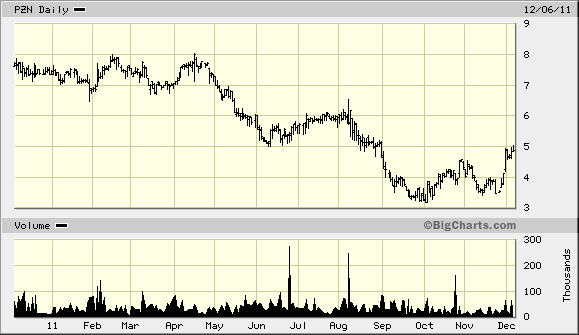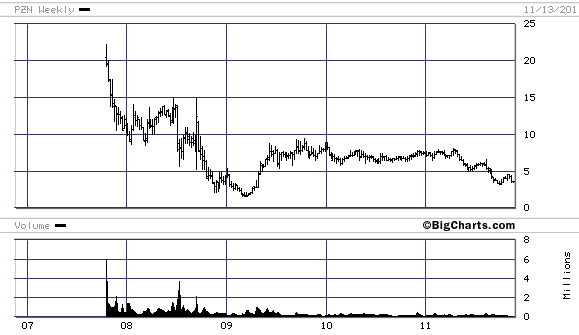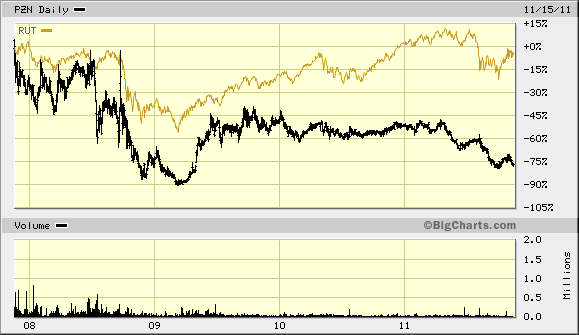Thoughts on SEARCH STRATEGY. Where to find ideas.
I will paraphrase John Templeton, “Go where the outlook is the worst.”
“Hit’em where they ain’t” –Yogi Berra
The headline today in the Wall Street Journal shows one area of pain–the housing market. From the Wall Street Journal (Sept. 21, 2011) “Home prices are expected to drop 2.5% this year and rise just 1.1% annually through 2015, according to a recent survey more than 100 economists to be released Wednesday.”
Anytime you have many of the 100 economists bearish on an industry, there is usually light at the end of the tunnel. Despite all the interference from the Federal government in housing through Freddie and Fannie, bank lending practices, etc. the market is doing its job of shutting off building due to the oversupply of homes built during the housing bubble of 2002 to 2006.
If you click on the commentary on the recent housing data below, you will notice the overbuilding in the 2005 and 2006 is being corrected severely for the past few years as building is at 1/3 the boom-time levels. Mal-investment is being cleared and resources are leaving the housing market to be better applied elsewhere.
http://www.ftportfolios.com/Commentary/EconomicResearch/2011/9/20/housing-starts-fell-5.0percent-in-august-to-571,000-units-at-an-annual-rate
The longer housing starts remain at low levels, in fact, the higher the probability that the market will go into a shortage situation, since the rate of family formations is running above the current level of starts. There are plenty of charts and data on housing here: http://www.nahb.org/showpage_details.aspx?showpageID=311 and here: http://www.esa.doc.gov/economic-indicators/economic-indicators-6
Note in the chart below comparing XHB (Homebuilders ETF), MDC and TOL, bad news is not driving the prices to new lows. Perhaps bad news is being priced in? The market is a discounting mechanism.
http://bigcharts.marketwatch.com/advchart/frames/frames.asp?show=&insttype=&symb=xhb&time=13&startdate=1%2F4%2F1999&enddate=9%2F21%2F2011&freq=2&compidx=aaaaa%3A0&comptemptext=mdc%2Ctol&comp=mdc%2Ctol&ma=0&maval=9&uf=0&lf=1&lf2=0&lf3=0&type=2&style=320&size=2&timeFrameToggle=false&compareToToggle=false&indicatorsToggle=false&chartStyleToggle=false&state=12&x=42&y=24
Gensis 41:53:
The seven years of plenteousness ended. Over and above the proportion purchased for the government during the years of plenty, the people could still have husbanded much for future use. But improvident as men commonly are in the time of prosperity, they found themselves in want, and would have starved by thousands had not Joseph anticipated and provided for the protracted calamity.
Since ancient times there have been cycles of plenty and famine. The famine in housing may be nearing an end give or take another 18 months, so I will look at homebuilders with decent balance sheets that I can buy at or below their clean book values (low goodwill).
I will start with MDC Holdings (MDC). This company has no competitive advantage, therefore paying a premium to its asset value would leave no margin of safety.
This post is to introduce you to a search strategy–where and how to look. This is NOT a suggestion for YOU to run out and buy homebuilders’ equities at random.
But certainly, this area is one place I might look for a small portion of my portfolio. I think world-class companies like Novartis (NVS) or Applied Materials (AMAT) today seem more compelling than asset plays since these are franchises (consistently over a business cycle earn high returns on invested capital) with little or no growth priced into their stock prices.
Have a good day.





